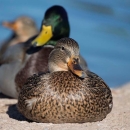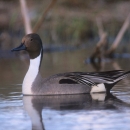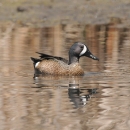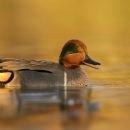Seasons of Wildlife
SPRING
During the spring, there is abundant wildlife to observe. On a sunny day, thousands of snow geese can be seen and heard for miles while migrating. Wild turkeys can be heard gobbling and displaying. In April, warblers return, white pelicans can be seen migrating, and shorebirds start to arrive. With the arrival of spring weather, smoke can been seen for miles and the smell indicates prescribed fire season has begun.
SUMMER
Summer rains often help paint a beautiful sight with rich green trees and grasses and colorful wildflowers. Wetland plants are actively growing and their flowering provide magnificent colors for the eyes. Prairies are in full color with native wildflowers blooming and are abundant with upland sandpipers and grassland sparrows nesting and raising their young. Great blue herons and egrets can be seen feeding in the shallow pools of water. There is nothing like being in central Kansas, the sunflower state, than to see its namesake in full bloom.
FALL
Flint Hills National Wildlife Refuge was created to provide resting and feeding areas for migrating waterfowl and there is no better time to visit than in the fall. Wetlands are being filled with water after a great growing season, bringing in the migratory birds. Early fall brings the first migratory birds to the Refuge, doves being one of the earliest. Ducks and geese number in the thousands with their peak numbers occurring in November.
WINTER
Winter can be cold, but there are plenty of wildlife to observe. American bald eagles and other raptors are abundant during the winter months. White-tailed deer can been seen in large groups feeding on planted winter wheat.





